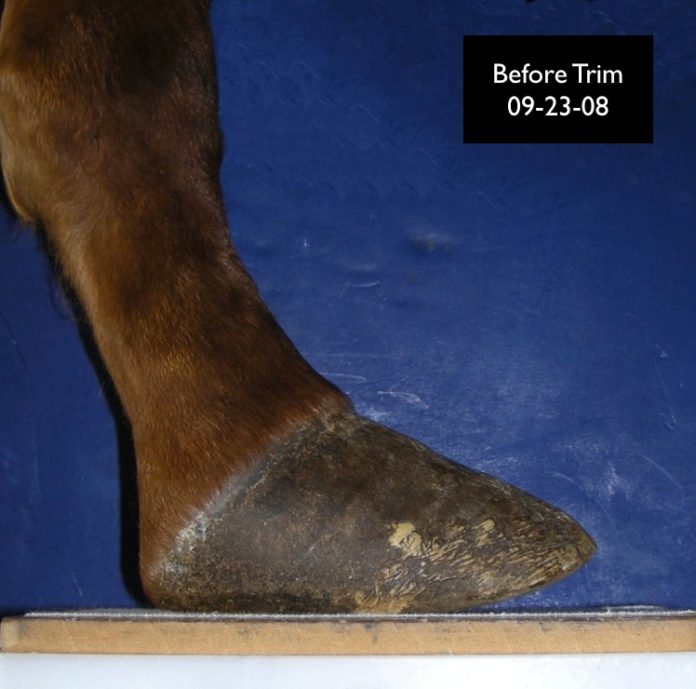At Daisy Haven Farm: Hoof and Soft Tissue Rehabilitation, we work on approximately 350 horses per month between two full time and three part time farriers. Out of all of those horses, only 10% are in shoes, approximately 35 horses at any given time. We are very selective of how and why we put horses in shoes. By all means we prefer our horses barefoot. However, there are definitely situations where a shoe can be a great tool to help the horse.

Some of the determining factors for us in deciding when to apply shoes are:
- When a horse needs a boot 24/7 to be comfortable long term we believe they should be in a shoe.
- When the environment or living situation prohibits a boot from being used. For example a boarding barn where the staff won’t apply boots as needed.
- When we cannot correct distortion in the hoof capsule with our trim alone.
Here is an example of a situation where the trim alone would not have been enough to help this animal. This filly was four months old when we were called in by the attending veterinarian. The filly had been born with contracted tendons, and surgery was performed. Unfortunately, the barn farrier became injured and therefore unavailable while she still needed special care – proper hoof care was not provided and she grew quite long.

This is what her her feet looked like when I was called in, specifically this is her right front foot pictured here:

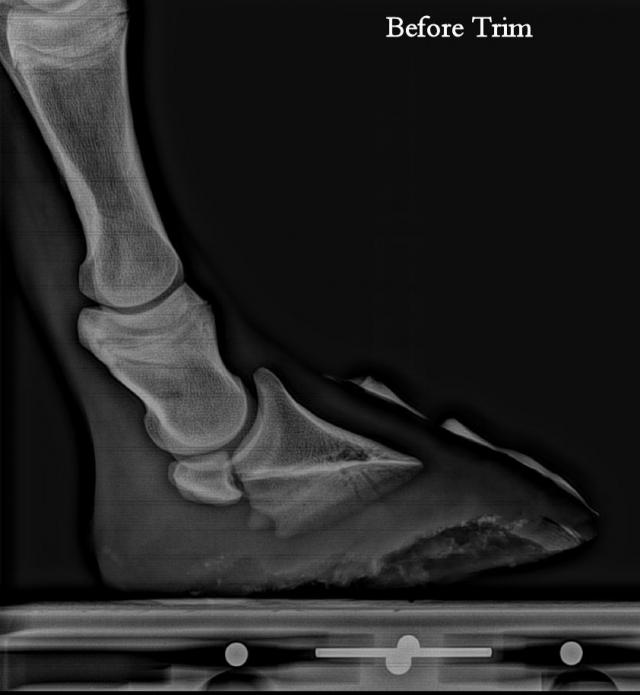

The filly is walking on her heel bulbs with her sole completely up off the ground. This means the position of the coffin bone is negatively rotated in relation to the ground, the bottom of the bone should be at a 3-8 degree angle in a healthy foot. With the help of the radiographs provided by the veterinarian, we applied a corrective trim to re-establish a 3-8 degree palmar P3 angle (the bottom of the coffin bone in relation to the ground).
This is how she stood on her right front foot after her trim on the same day:

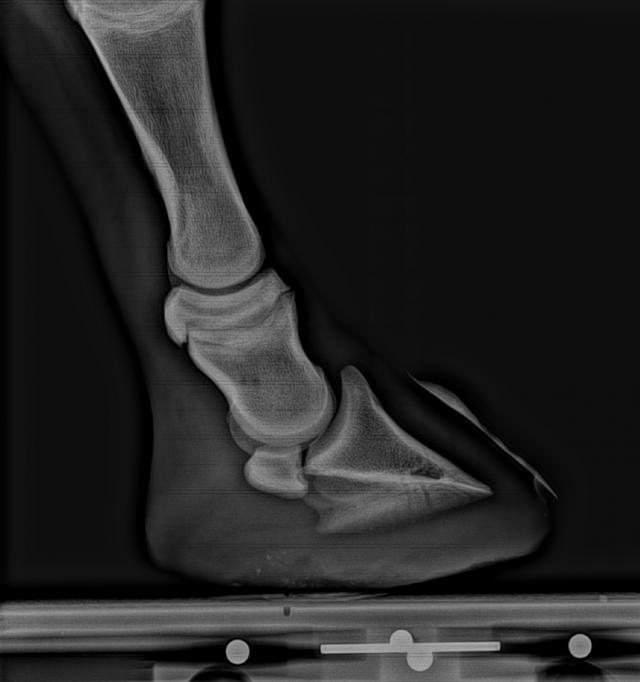

Not good enough! Even though I had the hoof capsule and coffin bone trimmed to the best alignment possible, if she wouldn’t stand on her toe, I wasn’t achieving my goals. Keep in mind that trimming is a subtractive process. Through our trim we can only work on what we can remove in order to improve the horse’s foot at that moment in time. Over time, as the foot grows, we can effect a positive change. This filly didn’t have time to wait for things to grow in their current alignment. We needed to get her realigned now while she was young and still growing to attempt a permanent functional change for her.
This is where a shoe can be an excellent tool. Adding a prosthetic support is an additive process. It gives us the ability to add material where we need it to create a positive change. In this case we added some height to her heels and enabled her to stand flat on her sole by using a glue-on composite shoe and some dental impression material around her frog.
This is the same day as the initial trim:
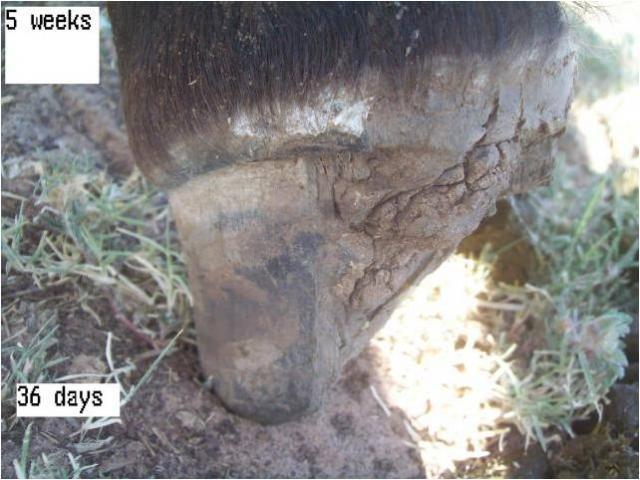
After two consecutive shoeings we were able to take her back barefoot!


Then just about a year and a half later I had the pleasure of seeing this filly again, this time as I was called in to help another horse in the barn. I was glad to see that while the filly was in need of a trim, the work we had done when she was younger had created the permanent change we were looking for.


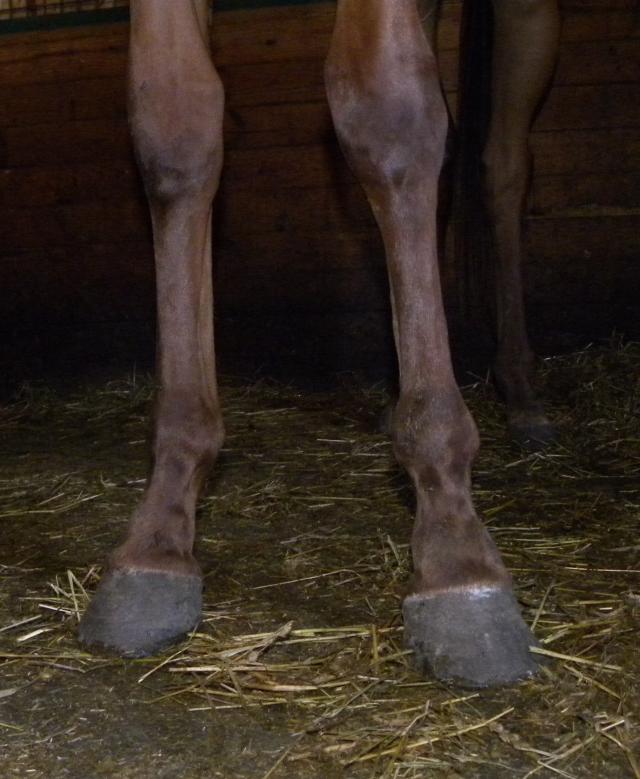
Working on horses like this one has taught me to “never say never”. I am grateful that when we need a prosthetic support device we have several tools to chose from in our practice: hoof boots, composite shoes that can be glued and/or nailed, hoof casts and more.
To see more case studies of our work please see: www.DaisyHavenFarm.com .


